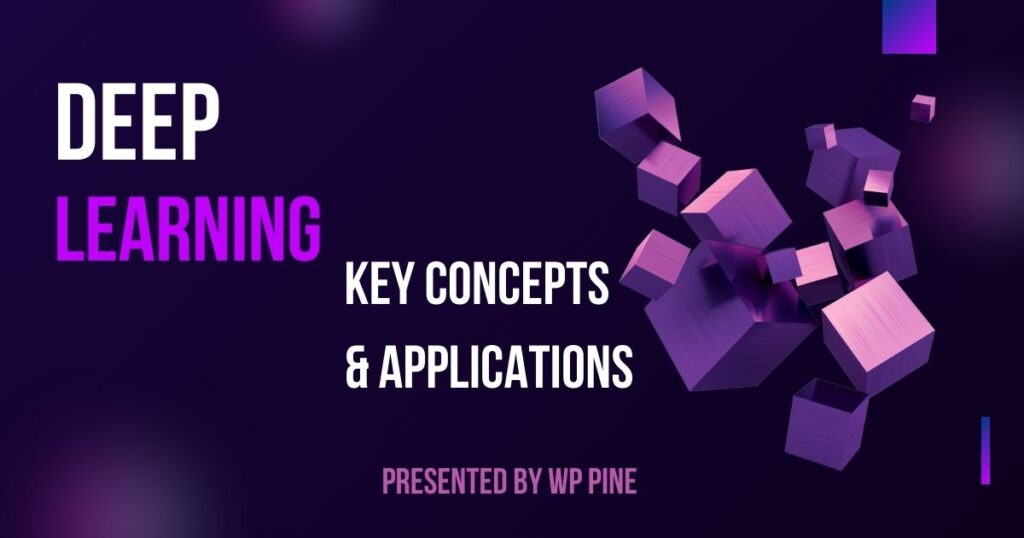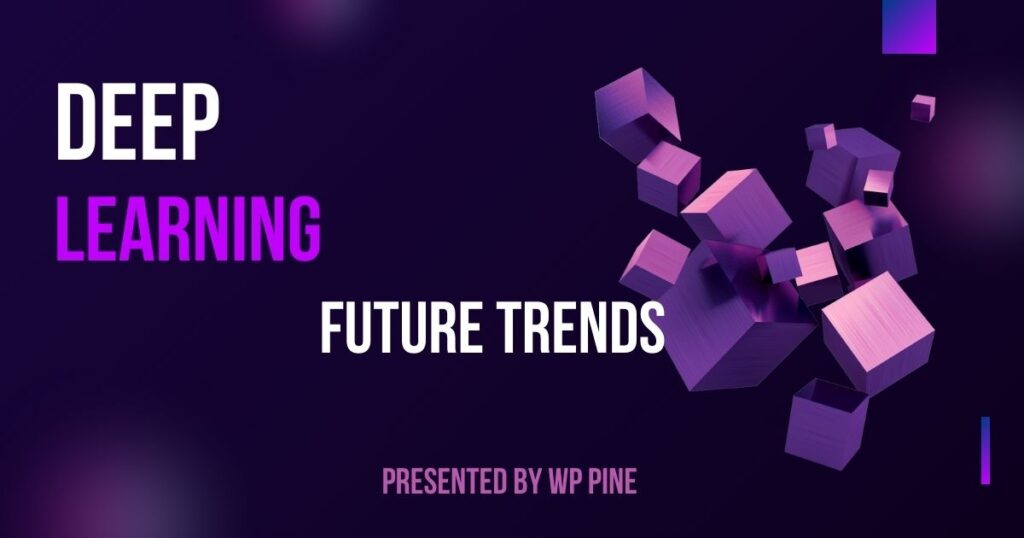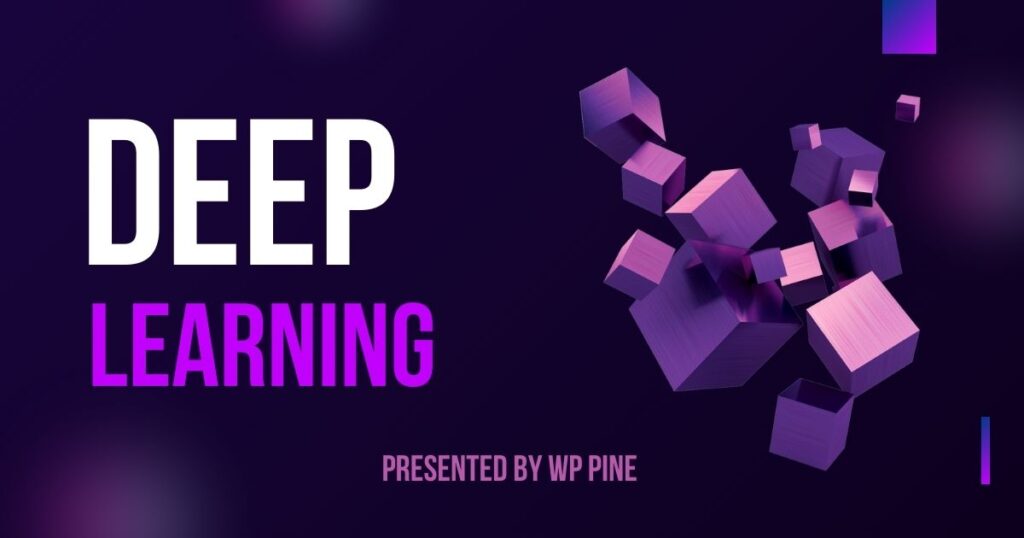Deep learning is derived as a subfield of machine learning, taken from the structure and function of the human brain. Its applications range from image recognition to speech and natural language processing to driverless cars. This technology has become the backbone of what some might view as groundbreaking achievements in artificial intelligence.
Of interest in deep learning and significance, the paper will demystify its key concepts, practical applications, as well as foundational principles.
Concept of Deep Learning
Deep learning is one of the subcategories of machine learning that can be used for extracting vast patterns and insights with the help of artificial neural networks with more than one layer. These artificial neural networks are loosely inspired by biological neural networks in human brains. While our brains process information using billions of interconnected neurons, artificial neural networks rely on many interconnected nodes to process data and analyze it.
Key Features of Deep Learning
Neural Networks
Neural networks are the basic building blocks of deep learning. They are just connected nodes arranged in layers, and such layers consist of:
- Input Layer: RECEIVES RAW DATA for Processing.
- Hidden Layers: these are the layers where the core of learning happens. The neurons apply mathematical transformations to describe the patterns about to be found in the input.
- Output Layer: Gives the final prediction or output based on the input of learned patterns.
- Each connection, or link in the network, contains weights and biases; these are exactly what gets optimized during the training process to increase accuracy.
Layers in Neural Networks
Layers are the constituent parts of a deep learning network where most of the thinking goes on:
- Input Layer: This is the entry layer where data will be fed into the network.
- Hidden Layers: These are “depth” in deep learning. At every step, a hidden layer extracts further complex features of data. Think of a picture recognition model:
- Early layers might detect edges and textures.
- More layers consider more abstract features, such as shapes or objects.
- Output Layer: It summarises the information being processed and gives an output in the last stage, for example, classifying an image or value prediction.
Why Deep Learning is Unique
An arrangement serial in layers is what allows neural networks to learn hierarchical representations of data. Each layer responds to more complex abstractions as compared to the previous one, scaling from

Key Concepts in Deep Learning
- Artificial Neurons (Perceptrons): They are artificial neurons that take in inputs and apply weights and biases before passing on outputs because of an activation function.
- Activation Functions: These are functions applied to the output of each neuron for the purpose of adding non-linearity to a network; that is what enables the network to learn complex patterns. Commonly used activation functions are sigmoid, tanh, ReLU, and softmax.
- Backpropagation: A learning algorithm used to adjust weights and biases for neurons in a neural network based on an error between the predicted and actual output. In this manner, the network can make iterations of improved predictions.
- Deep Neural Networks: Neural networks with many hidden layers can learn complex patterns and representations from data.
Applications of Deep Learning
Substantial successes come from DL in the following diverse fields, which are only a few examples:
- Computer Vision: image and video recognition, object detection, facial recognition.
- Natural Language Processing (NLP): speech recognition, language translation, sentiment analysis, text generation.
- Healthcare: disease diagnosis from medical images, personalized treatment plans.
- Autonomous Vehicles: Self-driving cars apply deep learning to object detection, path planning, and finally, decision-making.
- Finance: fraud detection, algorithmic trading based on market analysis.
Getting Started with Deep Learning
- Python and Libraries: Python is the most popular language for deep learning. Libraries like TensorFlow, PyTorch, and Keras provide high-level APIs for building and training neural networks.
- Data preparation: Deep models look forward to requiring huge amounts of labeled training data. Hence, preprocessing, cleaning, and augmenting data are very critical stages for the models’ accuracy.
- Model Training: Define a neural network architecture that works for your problem, compile this model with appropriate loss functions and optimizers, and train it on the labeled data.
- Evaluation and Tuning: Test model performance on validation data, tune hyperparameters like learning rate or batch size, and iterate for better accuracy.
Challenges and Considerations
- Computational Resources: Training deep learning models can be resource-expensive, requiring powerful GPUs or TPUs (tensor processing units).
- Overfitting: Models perform highly in training data but not so well on new data. Dropout and regularization might reduce overfitting.
- Interpretability: It is even a little difficult to interpret deep decisions, and so they often get called black boxes.

What Our Experts See as Future Trends
Progress in deep learning has been the core innovation driver.
- Explainable AI: efforts to improve the interpretability of deep learning models.
- Federated Learning: Training models on decentralized data while preserving privacy.
- Neuromorphic Computing: Designing hardware for efficient deep learning by analogy with the human brain.
Key Outcomes
Actually, DL is not a buzzword in the true sense of the term because it’s actually a transformational technology that has changed the way industries can tap into AI power. Through considerable data volumes and sophisticated computational models, DL enables breakthroughs in a variety of areas—health and transportation, for example.
By finishing these tutorials, you’ll be newly introduced to fundamental knowledge that can get you started on your deep learning journey and gradually envisage basic concepts as well as impactful applications. To further dig into all the computer vision and AI domains, including NLP, having a strong understanding of deep learning will unlock excitement and depth for you.
Additional Resources
Dive deeper into deep learning, practice with real datasets, and continue expanding your knowledge. Share this guide with others and leave your thoughts or questions in the comments!
For further reading on DL best practices and tools, consider exploring the following resources:
- Learn how Transfer Learning works in Deep Learning by Wppine
- A deep dive into RNN by Wppine
- A deep dive into CNN by Wppine
- Top 10 Machine Learning Algorithms by Wppine



